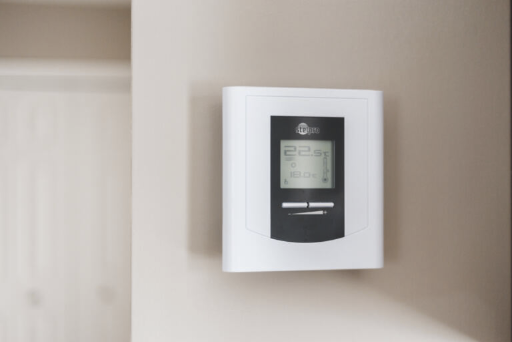Heat pumps are an energy-efficient alternative to traditional heating and cooling systems, utilizing the natural heat in the air, ground, or water to provide comfortable temperatures in your home.

In this article, we’ll dive into the three main types of heat pumps—air-source, ground-source, and water-source—exploring how they work, their advantages and disadvantages, and which one might best fit your needs.
Air-source heat pumps (ASHPs) are the most common type of heat pump.
They transfer heat between the air outside your home and the air inside.
During the winter, the ASHP extracts heat from the outdoor air, compresses it to increase the temperature, and then it’s moved inside to warm your home.
In the summer, the process is reversed, as the ASHP removes heat and humidity from the indoor air, expelling it outside to cool your living space.
Energy efficiency: ASHPs are highly energy-efficient, often reducing energy consumption by up to 50% compared to conventional heating and cooling systems.
If you want to supplement your home’s air conditioning system with an energy-efficient solution, we highly recommend contacting Harmonic HVAC to learn more about the Mitsubishi Ductless Mini-Split or our Armstrong Air products.
Not only will you enjoy enhanced control over your home’s air quality, but you will also qualify for a valuable tax rebate.
Lower utility bills: Due to their energy efficiency, ASHPs can result in lower utility bills.
Ease of installation: ASHPs are relatively easy to install, requiring no extensive ground or water infrastructure.
Limited effectiveness in extreme temperatures: ASHPs may struggle to provide adequate heating in areas with very cold (below 0°) winters or sufficient cooling in regions with very hot summers (above 95°).
Outdoor unit noise: The outdoor unit of an ASHP can be noisy, which may be bothersome to some homeowners or neighbors. We recommend looking at “variable-stage” Armstrong Air or Mitsubishi systems, which will run much quieter than the basic systems.
Ground-source heat pumps (GSHPs), also known as geothermal heat pumps, utilize the stable temperature of the earth to provide heating and cooling for your home.
A series of pipes called a ground loop, is buried in the ground and filled with a heat transfer fluid.
The fluid circulates through the loop, absorbing heat from the ground in the winter and transferring it to your home.
In the summer, the process is reversed, with the heat from your home being transferred to the cooler ground.
This style is mostly used in off-grid scenarios where power is limited, and there is more room for digging and trenched loops.
Higher energy efficiency: GSHPs are even more energy-efficient than ASHPs, often providing up to 70% energy savings compared to traditional heating and cooling systems.
Consistent performance: GSHPs perform well in both extreme cold and hot temperatures due to the stable ground temperature.
Low maintenance: GSHPs have fewer moving parts and are less exposed to the elements, resulting in lower maintenance requirements.
Harmonic HVAC doesn’t currently offer installation and servicing for Ground Source heat pumps.
This is primarily because these off-grid systems require significant land for proper installation. Other disadvantages include the following:
Higher upfront costs: GSHPs have higher installation costs due to the need for extensive ground loop systems, heavy machinery to dig the deep trenches for the ground loops, and the cost of the ground loop materials, such as PVC, screen, rock, and so on.
Long payback period: Although GSHPs can save on energy costs in the long run, the high upfront costs mean it can take several years to recoup the initial investment.
The payback period will depend on energy costs, system efficiency, and local climate factors.
Water-source heat pumps (WSHPs) operate similarly to ground-source heat pumps, but instead of using the earth’s temperature, they utilize a nearby water source, such as a pond, lake, or well.
A series of pipes is submerged in the water, circulating a heat transfer fluid to exchange heat between your home and the water source.
High energy efficiency: WSHPs are highly energy-efficient, similar to GSHPs, often providing significant energy savings compared to traditional heating and cooling systems.
Reliable performance: WSHPs can perform well in various climate conditions due to the stable temperature of the water source.
Environmentally friendly: WSHPs have minimal impact on the surrounding ecosystem, making them an eco-friendly option.
Access to water source required: WSHPs can only be installed if a suitable water source is nearby.
Potentially high installation costs: Depending on the water source and required infrastructure, WSHP installation costs can be high.
Air-source, ground-source, and water-source heat pumps each offer unique benefits and drawbacks; deciding on which type to install largely depends on your specific needs, location, and budget.
By understanding the differences between these three types of heat pumps, you can make an informed choice that will provide energy-efficient heating and cooling for your home while reducing your environmental impact.